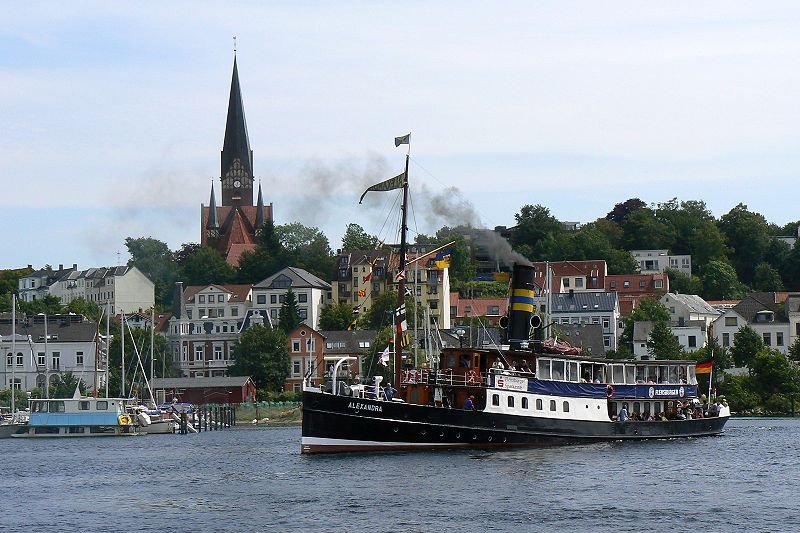 Flensburg, Schleswig-Holstein, Germany
Flensburg, Schleswig-Holstein, GermanySource: https://commons.wikimedia.org/wiki/File:Alexandra_Hafen_Flensburg2007.jpg
Author: VollwertBIT

Flensburg is one of the major towns in the state of Schleswig-Holstein, in northern Germany. It covers 56 sq km (22 sq mi) and has a population of 89,000 people (2012 estimate). This makes it the third largest town in the state behind Kiel and Lübeck.
Flensburg is just about 7 km from the Danish border. The modern town comprises 13 districts subdivided into 38 neighborhoods. Flensburg traces its history to the 13th century when it was first settled by Danes following whom came German merchants. It became one of the most important towns in the Duchy of Schleswig but was not part of the Holy Roman Empire.
Flensburg belonged to Denmark from 1460 until 1864, when it came under the rule of the Kingdom of Prussia. Even today, there is a large Danish community living here. In 1889, Flensburg was given the status of independent city (kreisfreie Stadt) within then Province of Schleswig-Holstein.
In 1945, Flensburg served as the seat of the Nazi government under Karl Dönitz, who was appointed by Adolf Hitler to replace him before Hitler killed himself. Dönitz served for less than a month, from 30 April to 23 May, 1945, when the Nazi government was dissolved.
 Nordermarkt, Flensburg
Nordermarkt, FlensburgSource: https://commons.wikimedia.org/wiki/File:Nordermarkt._Flensburg.jpg
Author: Andreas Trepte

How to go to Flensburg
From Hamburg, take Autobahn 7 heading north until you reach Flensburg just before the border with Denmark.Places of Interest in Flensburg
- Christuskirche
- Flensburg Lion
- Heiliggeistkirche
- Marineschule Muerwik
- Museumswerft Flensburg
- Nikolaikirche
 Latest updates on Penang Travel Tips
Latest updates on Penang Travel Tips

Copyright © 2003-2025 Timothy Tye. All Rights Reserved.

 Go Back
Go Back